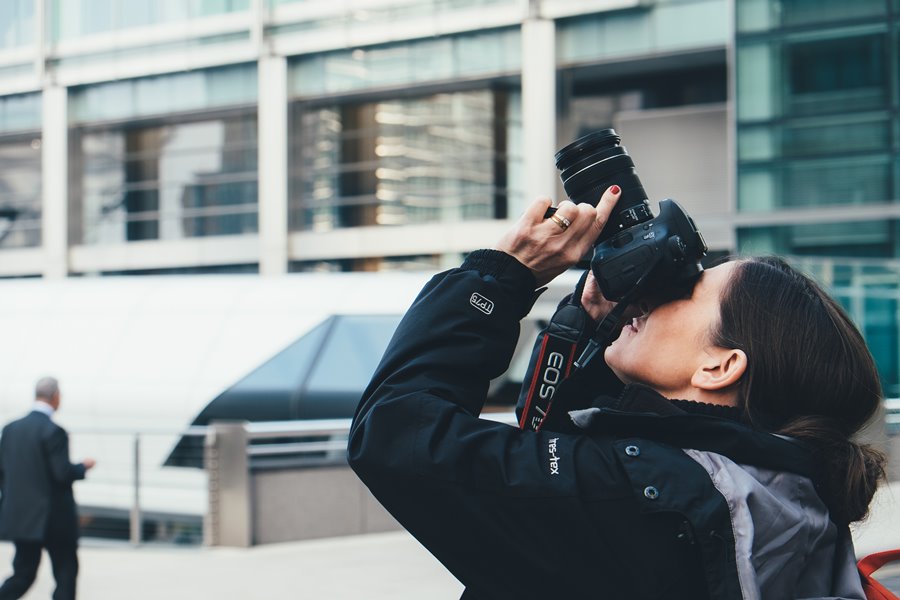Apathy isn’t enough. Some problems need to be tackled head on, says Marie Gardiner

Image by Annie Spratt
If you’ve heard a lot about controversial, sexist photographic advertising campaigns lately, then I’m sorry because we’re about to talk about them some more. Thanks to thoughtlessness, the issue of sexism and photography has been thrust into the limelight.
But why is it a big deal for, say, a company to use only male ambassadors and not a single woman? Why is it a big deal to advertise your latest product using a topless female model?
These are perfect examples of how casual sexism can slip by, unnoticed. How many times have similar campaigns been signed-off, without someone questioning the decision?
Sexism is so ingrained, so delicately spun through the fabric of our society that we often cease to notice it at all. If a campaign included only women and no men, would anyone notice? My gut feeling would be yes, because it’s so against the norm.
Is it sexism if it’s subconscious?
The simple answer is yes. Take the UK as an example, and consider its efforts to tackle inequality between the sexes. A recent article from The Guardian highlights how slowly the UK progressed in terms of gender equality between 2005 and 2015.
If we’re accepting the premise that sexism exists, and that there’s still a way to go, then this very definition includes those subconscious acts and attitudes that facilitate a system where one sex is considered and given precedence above and beyond the other.
Nobody is preventing women from getting into photography...
Quite right, and there are so many great women photographers, but where the hell are they? Who is representing them? Where are they being represented?
An article from Stylist states: “Only 5% of the pictures used by leading photography publishers are taken [by] women, and just 2% of photographers on the books at most commercial agencies are women.”
This article might have been published two years ago, but follow @womenphotograph on Twitter and you’ll have access to a roundup of the ratio of female to male photographers used by leading news agencies each week. The numbers aren’t good...
“That’s editorial!” I hear you cry. “What about the other types of photography?” Well, I have a mountain of photography magazines littering my office. I selected two publications at random (from the last two years) and counted the features – those which showcased the work of men, and those which showcased the work of women.
The first magazine was aimed at amateurs. It had a total of 15 features and only one showcased the work of a woman… The second magazine is a popular publication aimed at most photographers, but also caters for skilled amateurs and professionals. It contained 25 features, five of which focused on female photographers. This very blog series (Perspective) has – at the time of writing – 17 blog posts written by five men and two women, myself included.
So what can we do?
This is not a finger-pointing exercise; it simply demonstrates that women are not equally represented. I’ve heard the argument that women don’t put themselves forward as often as men do, and this might be true – someone told me that an editor friend of hers has to look four times as hard to find women contributors as men, and I don’t doubt it.
What I would argue, is that perhaps it’s hard to put yourself forward for something that is heavily male-dominated. This subject can be prickly, it can make people feel defensive, but if we say nothing and we don’t (or won’t) talk about topics that have the potential to make people uncomfortable, then nothing will change. We can’t change how things have been, but we can make meaningful differences going forward.
So, publishers, please seek out women to include, represent and mentor. Photographers, put forward your female peers. And women, encourage each other. Only by pushing hard while everyone is paying attention can we start to redress the balance.
Don’t let apathy be the excuse.
About the Photographer
Marie Gardiner is an author and photographer based in North East England. See more of her work at mariegardiner.co.uk.
Related Articles
Perspective: How Having a Young Family Made Me a Better Photographer
Perspective: Why Smartphones are the Best Thing Ever to Happen to Photography
Perspective: Will Automation and Artificial Intelligence Make Photographers Extinct?

